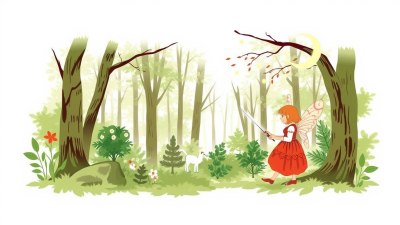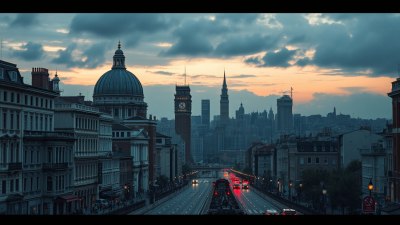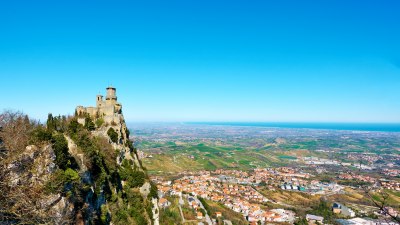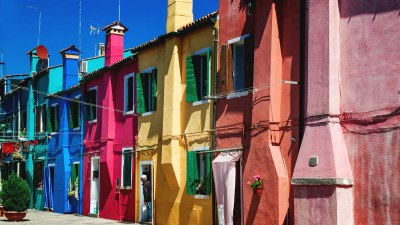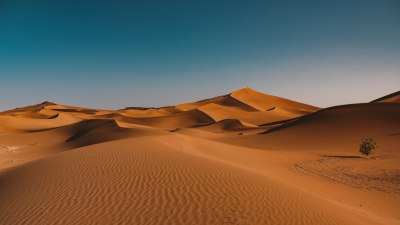The Most Unique Festivals Around the World
Discover the world's most unique and fascinating festivals, celebrating culture, tradition, and creativity.

Festivals are a vital part of human culture, providing communities with opportunities to express their identity and share traditions with others. Across the globe, there are countless festivals that stand out due to their unique themes, origins, and celebrations. In this article, we will explore some of the most unique festivals from various countries, highlighting what makes them special and worth experiencing.
1. La Tomatina - Spain
La Tomatina, held annually in the town of Buñol, Spain, is perhaps one of the most famous unique festivals in the world. This annual event occurs on the last Wednesday of August and involves participants throwing tomatoes at each other in a massive food fight. The origins of La Tomatina date back to 1945 when a group of youths began a tomato fight during the town's festival. It has since evolved into a large festival attracting thousands of participants from around the globe. Before the tomato-throwing frenzy kicks off, the day usually involves music, dancing, and a celebratory atmosphere.
2. Holi - India
Holi, the festival of colors, is a vibrant and joyous celebration that takes place predominantly in India and Nepal. Celebrated in March, Holi signifies the arrival of spring and the victory of good over evil. Participants throw colored powders and water at each other, creating a kaleidoscope of colors. The festival also includes traditional music, dancing, and delicious food. Holi has deep cultural and religious significance for Hindus but has become popular worldwide, symbolizing love, friendship, and the joy of living.
3. Diwali - India
Another significant festival in India is Diwali, also known as the festival of lights. This five-day celebration usually falls in October or November and symbolizes the victory of light over darkness and good over evil. Homes and public places are adorned with oil lamps, candles, and colorful decorations. Fireworks light up the night sky, and families gather to share sweets, participate in prayers, and engage in festive activities. Diwali is not only celebrated in India but also by the Indian diaspora worldwide, making it a festival of unity and joy.
4. Carnival - Brazil
Brazilian Carnival is arguably the most famous carnival celebration globally, drawing millions of visitors to cities like Rio de Janeiro, Salvador, and São Paulo. Taking place before Lent, the festival features parades, samba dance competitions, elaborate costumes, and street parties that last for days. The Rio Carnival is known for its extravagant floats and samba schools competing for recognition. Carnival represents Brazilian culture's vibrancy and diversity, showcasing not only the country's music and dance but also its art and community spirit.
5. Oktoberfest - Germany
Oktoberfest, originating in Munich, Germany, is one of the largest beer festivals in the world. Lasting from late September to the first weekend in October, the festival attracts millions of visitors who come to enjoy traditional German beer, food, and culture. Agricultural and craft exhibitions, amusement rides, and live music also play vital roles in the festival. The history of Oktoberfest dates back to 1810 when it was first celebrated as a royal wedding. Today, it is a symbol of Bavarian heritage and a gathering of beer enthusiasts from around the globe.
6. Running of the Bulls - Spain
The Running of the Bulls, or San Fermín, is a controversial and thrilling festival held annually in Pamplona, Spain. The festival lasts for a week in July, culminating in the famous bull run where participants run in front of a group of bulls that are let loose on the streets. The event is both exhilarating and dangerous, attracting thrill-seekers and tourists. Despite the risks, San Fermín is a celebration of Basque culture, complete with traditional music, dance, and food. The festival has deep historical roots dating back to the 14th century and has become a significant cultural event in Spain.
7. La Fête de la Musique - France
La Fête de la Musique, or Music Day, is a unique celebration that occurs annually on June 21st in France. It is an all-day music festival that takes over streets, parks, and venues, allowing musicians of all genres and skill levels to perform for free. The festival originated in 1982 as a way to promote music and encourage people to engage with it. Today, it has grown into an international event celebrated in over 120 countries, showcasing the universal joy of music and the arts. Whether it’s a street musician or a local band, La Fête de la Musique highlights the importance of community and creativity.
8. Albuquerque International Balloon Fiesta - USA
The Albuquerque International Balloon Fiesta is an annual event held in New Mexico, USA, every October. It is the largest hot air balloon festival in the world and attracts hundreds of balloonists and thousands of spectators. The sight of colorful balloons filling the sky is breathtaking and creates a picturesque landscape against the backdrop of the Sandia Mountains. Apart from mass balloon ascensions, the festival features live entertainment, food vendors, and local artisans. This unique festival emphasizes the beauty of ballooning and brings together the spirit of adventure and creativity.
9. Harbin International Ice and Snow Sculpture Festival - China
Taking place in Harbin, China, this annual festival is famous for its stunning ice and snow sculptures. Typically held from January to February, the festival transforms the city into a winter wonderland filled with intricately carved ice structures, some reaching impressive heights. Artists from around the world showcase their talents, competing for awards and recognition. The festival also features ice skating rinks, snow activities, and illuminated displays, creating a magical ambiance at night. The Harbin International Ice and Snow Sculpture Festival attracts tourists seeking to experience the beauty and artistry of winter.
10. Songkran - Thailand
Songkran, the Thai New Year festival, is celebrated annually in April and is famous for its water festivities. Traditionally, Songkran signifies the washing away of sins and bad luck for the upcoming year. The event has transformed into a massive water fight, with locals and tourists participating in lively water battles across the streets. People throw water, use water guns, and even engage in traditional ceremonies like pouring water over Buddha statues. The festival also includes parades, traditional music, and delicious Thai cuisine. Songkran is a time of renewal, joy, and togetherness, making it an unforgettable experience.
11. Yi Peng Lantern Festival - Thailand
Another beautiful festival in Thailand is the Yi Peng Lantern Festival, celebrated concurrently with Loy Krathong in November. The festival is characterized by thousands of lanterns released into the sky as a symbol of letting go of misfortune and welcoming good luck. The breathtaking sight of illuminated lanterns floating away creates a magical experience for attendees. Alongside the lantern release, there are traditional dances, music performances, and cultural displays. The Yi Peng Festival reflects Thai spirituality and showcases the beauty of hope and harmony.
12. Day of the Dead - Mexico
El Día de los Muertos, or the Day of the Dead, is a significant Mexican festival celebrated on November 1st and 2nd. This vibrant celebration honors deceased loved ones through altars, offerings, and colorful decorations. Families create ofrendas (offerings) with photos, food, and items the departed enjoyed in life. The festival blends indigenous and Catholic traditions, emphasizing the belief that death is a part of life. Streets are filled with parades, costumes, and music, celebrating life and death in a unique and joyful way. The Day of the Dead highlights the Mexican culture's rich history and understanding of life and the afterlife.
13. Mardi Gras - USA
Mardi Gras, primarily celebrated in New Orleans, Louisiana, is a festival known for its vibrant parades, elaborate costumes, and festive atmosphere. Occurring on Fat Tuesday before Lent, the festival is deeply rooted in French Catholic traditions. The festivities include floats throwing beads and trinkets to crowds, live music, and a variety of culinary delights. Mardi Gras is a celebration of life, indulgence, and community spirit, bringing together people from all walks of life to celebrate together. The festival showcases the unique cultural heritage of New Orleans, blending French, African, and Spanish influences.
14. Mud Festival - South Korea
The Boryeong Mud Festival is an annual event held in Boryeong, South Korea, where participants come together to enjoy various mud-related activities. The festival takes place in July and features mud wrestling, mudslides, and mud games, promoting the health benefits of the region's mud. Originating in the late 1990s as a promotional event for cosmetic products made from local mud, it has evolved into a celebration of fun and togetherness. Families, friends, and visitors indulge in the playful chaos of mud while enjoying live music, food, and festivities. The Boryeong Mud Festival is a unique experience that encourages people to let loose and have fun.
15. Festival of Lights - Australia
Light is the central theme of the Festival of Lights in Melbourne, Australia. This annual event, also known as the Melbourne International Festival of Lights, showcases breathtaking light displays and installations created by artists from around the world. Held in spring, the festival encourages visitors to explore the city while experiencing vibrant art. The event often includes live performances, interactive exhibits, and workshops, combining creativity and innovation. The Festival of Lights reflects Melbourne's artistic spirit and its commitment to celebrating the beauty of light and community engagement.
These unique festivals from around the world illuminate the rich tapestry of cultural expressions and traditions that exist today. Each festival offers a glimpse into the local community's identity, history, and creativity. Experiencing these celebrations firsthand is a powerful way to connect with different cultures and foster a sense of unity among diverse populations. Whether it's through food, music, art, or shared experiences, festivals bring people together in joyous celebrations of life and humanity.
